What does a carrot fly look like and how to get rid of it?
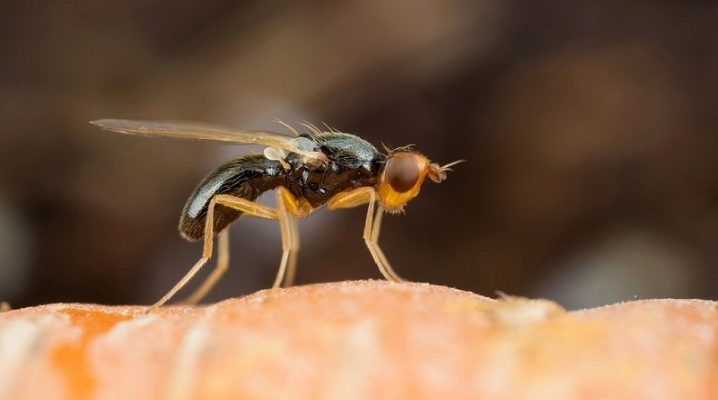
Although the carrot fly is not a stubborn and obsessive pest that will cling to your carrot plantings with all its might, it can nevertheless significantly reduce yields, ruining most of the carrots planted by your labors. Unbearable conditions of existence should be created for these harmful insects - and you can say goodbye to her for a long time.
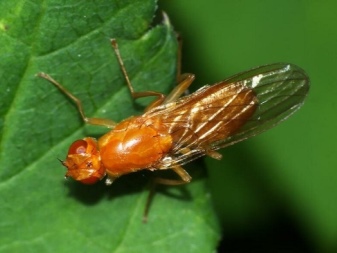
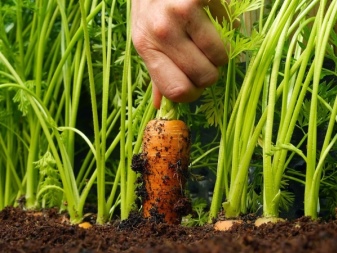
general description
Carrot flies are annoying, voracious and, unfortunately, common insects that cause a lot of trouble for gardeners. They are small (4.5-5 mm), well distinguishable on the surfaces of developing umbrella plants, and look like typical flies. Outwardly, this is a fly with a dark, shiny, slightly pubescent body. Its head is reddish-yellow, matching the carrot color. As for the limbs and tentacles, they are bright yellow. The wings are elongated, transparent, curved under the abdomen; upon closer examination, the venation is noticeably brownish with yellowness.
Mature flies in the imago stage do not gnaw roots and do not harm the tops, being content with the nectar of flowering plants. Females visit carrot plantings in order to lay eggs, insect larvae are the main enemy of yield. Knowing the life cycle of this malicious fly, one can clearly imagine the mechanisms for causing damage, and take timely measures to eliminate or minimize it. Like many Diptera insects, the life of a fly includes several periods of development - these are the stages of an egg, larva, pupa, and imago.
Flies of the first generation are born in the spring, after the soil warms up to + 10-15 ° С. Their first aerial raids coincide with the blossoming of apple and lilac trees, while carrot shoots remain out of their attacks until the rapid development of root crops starts. It is this period that is favorable for the feeding and growth of the larvae. During her life, a female can produce approximately 120 flies. Oviposition begins at the end of May and lasts about 20 days. For this, the female needs special conditions - the soil in the beds must be moist. Often, flies lay their eggs in areas with turnips and celery, but they simply adore the aroma of ripening carrots.
Eggs are laid in the area of the root collar of the selected plant. On average, about 10 eggs are laid per bush. Some of them die under the sun's rays, some are pecked by birds or eaten by predatory insects. Nevertheless, the remaining eggs are quite enough to bring significant harm to the crop. Upon reaching a temperature within + 20-22 ° C and a sufficient degree of humidity, larvae appear from the eggs in 4-7 days.
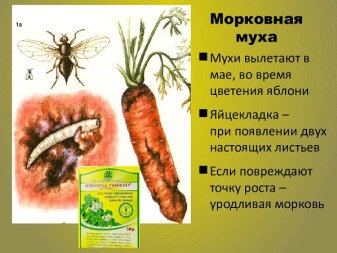
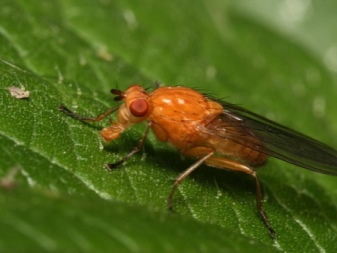
In the larval phase, the flies resemble a full pale yellowish worm up to 5 mm in size. The anterior part of the larvae is somewhat narrowed, and the posterior part is slightly rounded, the head and legs are absent. An attentive gaze of the gardener will find behind the larva two dark processes, which are spiracles. After being born, the animal gnaws at the fruit, intensively feeding on carrot flesh for 20-25 days. After that, the insect leaves the carrot and crawls into the soil, where the pupation process takes place. Pupae of flies live in brownish, segmented pseudococks. Approximately in the second decade of July, pupae transform into adults, penetrating through cocoons, they fly out into the light, marking the appearance of a new wave of flies.
The adults immediately begin to multiply again - the cycle resumes. Nevertheless, eggs left in the ground during the summer fail to complete a full-fledged developing cycle. This is hampered by the harvest time. Therefore, a certain number of larvae remain in the harvested fruits for the winter, while others manage to pass the pupation phase, remaining in the soil. In the first case, the roots eaten from the inside are not stored for a long time and soon rot. Flies can settle in the beds either early in the spring or in the second half of summer. They fly weakly and not smartly, without overcoming significant distances, which means that their appearance on your site may be due to measures taken against them in neighboring areas.
Among the reasons for the appearance of flies in your garden, we indicate the following:
- excessive soil irrigation;
- thickening of crops, lack of lighting;
- violation of the rules of crop rotation;
- errors in the use of chemicals, poisonous and harmful, and harmless insects;
- growing unsweetened types of carrots (flies love them more).
Even the appearance of one fly can lead to the formation of a large colony of these harmful insects in the garden. But this is not an irreparable disaster. The main thing is to understand that your potential crop has been attacked by carrot flies, and not by other pests.
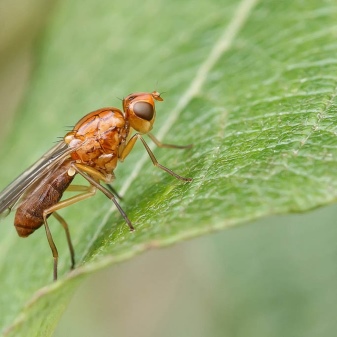
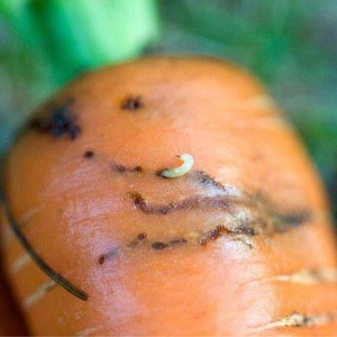
Signs of defeat
Experienced gardeners, in addition to typical crop care measures, make it a rule to carry out regular inspections of the state of carrot plantings. This allows early detection of signs of possible pest flies. Among these signs:
- the tops and the outer part of the carrots, where the larvae settle, acquire light purple hues;
- affected bushes develop much more slowly than healthy ones;
- if the root crop is pulled out, then in the affected specimens, holes and furrows of a dark color are noticeable, similar to the passage of a wireworm, which also adores carrots;
- the affected areas of root crops begin to rot, like wounds that are unprotected from the penetration of soil microorganisms;
- yellowing and dryness of the tops;
- cracks in fruits, their cracking and rotting;
- disgusting smell and bitter taste of root vegetables;
- the unsightly segmented configuration of carrots is a kind of defensive reaction to the attacks of pests that eat up the larvae.
Any of these symptoms can indicate that the fly has appeared, not to mention that it is flying over the plants. If a similar condition spreads throughout the entire ridge, then the plants should be immediately eliminated and burned until the losses reach significant proportions. The initial symptoms, when the fly flies out and begins to lay eggs, can be detected on the root collars of plants. It is in these places that the larvae develop, they soon begin to eat plants, and therefore we must act immediately.
It is also possible to identify problems with carrot flies in the phase when the larvae are already in the roots (the plant will cease to develop normally), since the leaves begin to turn yellow, acquiring an unnatural appearance. Root crops begin to die slowly, it is no longer possible to save them, but the remnants of the crop are still possible to save.

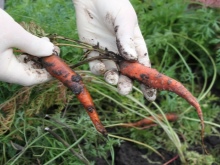
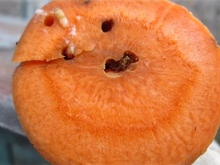
What preparations should be used to treat carrots?
The main methods for destroying flies are reduced to the implementation of competent agricultural technology. It is better to prevent attacks by carrot flies than to implement measures to combat their large populations. In commercial farms, such opposition is carried out in compliance with the rules of crop rotation. In the gardens, insecticides (chemicals), mechanical methods, as well as time-tested folk recipes, which were successfully used by previous generations of gardeners, are often used.
Chemical
It is important to realize that the use of insecticides is one of the radical measures, since the overwhelming majority of such substances are created on the basis of arsenic compounds and phosphorus, which help to remove not only harmful insects, but also negatively affect the necessary organisms.
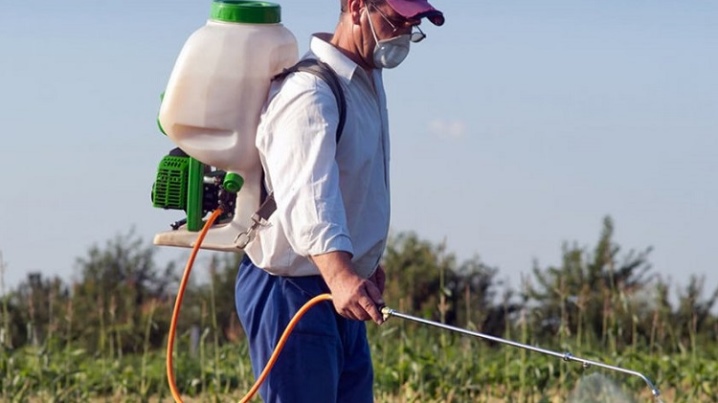
Let's note a number of popular drugs that really help get rid of flies and save plants:
- "Arrivo" - an emulsion agent for intestinal action used for aerosol treatment of a culture;
- "Inta-Vir" - means in the form of tablets or powders of nerve agents, it is dissolved in water for preventive treatment and healing of diseased bushes, excellently helps to poison pests;
- "Decis" - granular agent of the intestinal type of action;
- "Aktara" - a new and effective substance produced in the form of tablets, suspensions and powders;
- "Confidor" - a reliable substance of stable action, made on the basis of nicotine compounds, is used for irrigation;
- "Corado" - a systemic substance for long-term protection against Colorado beetles, aphids, onion and carrot flies (1 ml per bucket of water).
Before purchasing these and similar formulations, the guidance material should be read carefully to clearly understand the specifics of each ingredient. Remember, your health is at stake. As a result, we recommend using insecticides as prophylactic agents in order to eliminate pests at the beginning of the growing season on young plants. If the carrots are attacked by the second generation of flies, then it is safer to use more gentle methods and preventive measures.
After carrying out procedures with such substances, vegetables are allowed to be used in food after 21 days, until the compositions disintegrate into components that are not hazardous to health. Use chemicals if all other methods of eliminating harmful insects were not entirely productive.
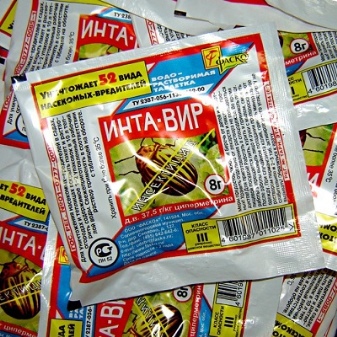

Biological
Biological products are more gentle than chemicals.
- Fitoverm quite successfully helps to fight against the front sight. A solution is being prepared to spray foliage and soil: 10 ml of the product per 5 liters of water.
- Another method is the introduction of carrot fly nematodes (Steinernemaspp) into the soil near the carrots.
Folk methods of struggle
Often, agents that help scare off carrot flies grow in the beds in the summer, they can be purchased at pharmacies or in a regular retail network, and they are cheap:
- you can spray carrots with infusions of wormwood, tomato tops, yarrow, garlic or onion formulations;
- during the period when the fly larvae appear, spill a 2.5% salt solution near the plants in the garden;
- you can sprinkle the soil near the carrots with a mixture of ash, crushed pepper and tobacco dust, and then loosen 23 cm of soil with it;
- in April-May, burdock is dug with the root, chopped up and soaked for 7 days, then the mixture should be diluted with water, a piece of hozmyl should be dissolved in it, the solution should be sprinkled on the bushes.
The dusting method is used only under stable dry conditions. We recommend treating young bushes and spaces between rows with strong-smelling natural products: tobacco dust, mustard composition, combined compositions of mixed crushed pepper.
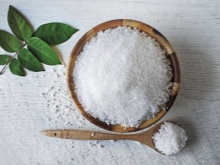

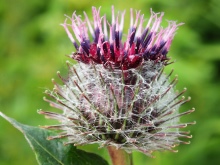
Ammonia
This is one of the methods of carrots processing that are often used by gardeners in the fight against flies. They will not place eggs in bad-smelling carrot beds. For the solution, ammonia and water are used (in a proportion of 50 ml of alcohol per 10 liters of liquid), the ridges are watered in the spring, before sowing, and the young are also abundantly sprayed, enriching the soil at the same time with nitrogen.
Ash
The processing of bushes of culture is carried out both with ash and tobacco dust by the method of dusting and in solutions. To do this, two glasses of ash are dissolved in 10 liters of water, the aisles are treated every 14 days. Another recipe - 100 g of ash is dissolved in 100 ml of water, 50 g of wood ash is added there.The mixture should be used to process the soil between rows. Consumption - about 8 g of mixture per 1 m2. Processing should be done 2-3 times a season with a pause of up to 10 days.

Mustard
Traditionally, mustard is used during the period when the fly intensively lays eggs in the soil. At this point, the plants are irrigated with a mustard powder solution. 50 g of powder are added to 10 liters of water. But you can handle planting carrots by sprinkling them with just mustard powder.
Sagebrush
Wormwood infusions are also popular with gardeners. The greens of the grass are placed in a container, poured with boiling water, and then the mixture is kept at a temperature of 18-20 degrees until it cools. Next, the mixture is filtered, after which it is divided into 3 parts. To obtain the product, 1 part of the mixture is diluted in 6-7 liters of water (preferably settled).
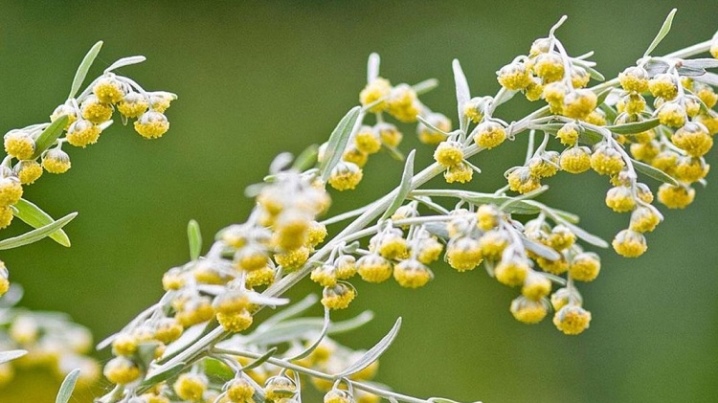
Onion and garlic tinctures
It is easy to prepare a garlic tincture - 200 g of garlic slurry per 2 liters of boiling water. The specified mixture should be insisted for a day, then the solution must be filtered and water is added to 10 liters. This composition is used for spraying carrot bushes or irrigating ridges at the rate of 1 liter per 10 m2. More recipes for infusions of garlic or onions - 6 cloves of garlic or 1 kg of onion (flies do not tolerate its smell) finely chop and pour 1 liter of boiling water. It is necessary to insist for a day, then add 20 g of liquid soap, add water (1: 2).
Processing is carried out every 7 days, in the morning or evening.
Tomato tops
Tomato tops (about 3 kg of plant residues) are finely cut, placed in a saucepan, boiled water is poured into it and kept for 2-3 days. After that, 20 g of grated hozmyl is added to the composition. This solution should be watered with carrot bushes. A decoction of tomato tops - 10 liters of settled (preferably rain) water are used for 4 kg of tomato greens. The tops are boiled for about 30 minutes, then the broth should be filtered and defended for three hours. For the product, you will need 3 liters of broth and 10 liters of settled water, where you need to add 30-40 g of liquid soap.
Often, to scare off flies in the aisles, they simply lay out the tops of tomatoes or wormwood greens. These methods work if you try them in combination with others, once every 30 days.
If the simple rules of agricultural technology are violated, it is simply inappropriate to use chemical agents and folk methods of dealing with the front sight.
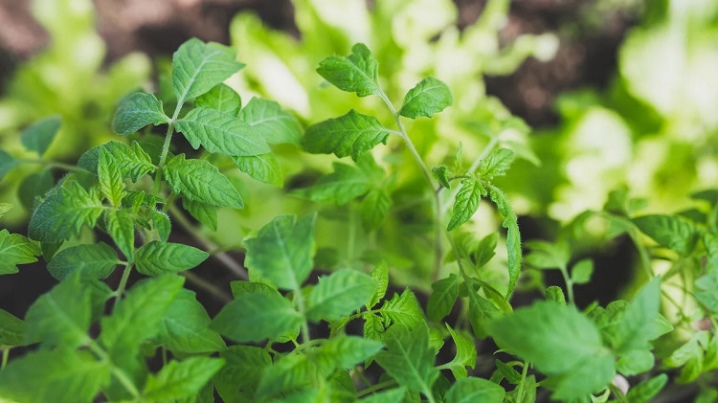
Prevention measures
A dangerous misconception for beginners is simply planting carrot seeds that are resistant to carrot fly varieties, and then finish all the activities related to protection from these harmful insects.
Nevertheless, carrots fundamentally require stable growth conditions, as well as adherence to well-known agricultural practices that help protect the crop from fly attacks:
- it is not necessary to plant root crops in darkened places, it is necessary to select areas in open, slightly elevated areas;
- compliance with the rules of crop rotation is mandatory (carrots develop productively after planting onions, garlic, potatoes, tomatoes);
- it is extremely useful to alternate crops in the garden - plant carrots with onion sets, increasing the distance between the rows;
- it is useful to plant marigold and calendula bushes along the edges of the beds, these plants are able to protect, protect carrots with their strong aroma from fly attacks;
- do not overmoisten the soil in the beds, excess moisture contributes to the laying of eggs by the flies;
- with timely thinning of plantings and removal of weeds, access to the sun's rays opens up, which are able to protect the plantings, being fatal to the eggs of the carrot fly.
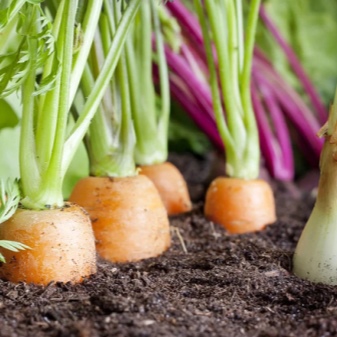
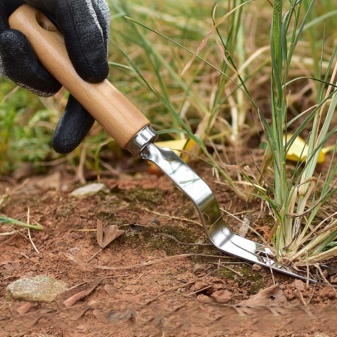
Carrot flies do not attack in hordes (like locusts), so gardeners often do not pay due attention to single plants damaged by flies, but in vain. The next year, many flies will appear from the soil. It is for this reason that in autumn the soil should not be dug up, but turned over so that the overwintered pupae remain in layers that will freeze in winter. Of the additional procedures for preventive maintenance, we indicate the following:
- it is advisable to process carrot seeds before planting: "Phytocide", "Trichdermin", "Azotofit";
- it is useful to surround the beds with a barrier (at least 0.6 m) - female carrot flies fly low over the soil before laying, and such a relatively low barrier will become a real obstacle for them;
- you should not plant carrots in lowlands where moisture accumulates - flies reproduce in such places;
- you should not plant umbrella crops very close to each other, since non-thickening of crops contributes to better ventilation of the plants;
- irrigation of the crop should not be frequent and abundant;
- among the bushes of carrots, you can place plastic bottles with holes where you can place pieces of naphthalene - its strong smell scares off flies;
- do not fertilize the soil where the carrots are planted with fresh manure.
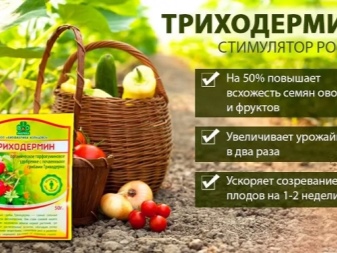
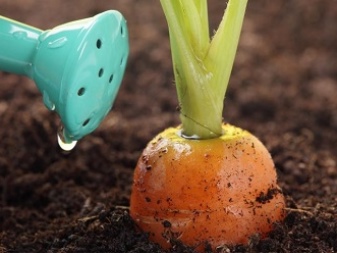
Useful Tips
Ridding a culture of flies is an activity that requires attention and patience. Therefore, a number of practical advice from experienced gardeners will be useful here:
- it is useful to mulch the aisles in the beds with peat crumbs - the flies do not tolerate the soil that smells of peat;
- it is useful to process carrot seeds before sowing with warm water (+ 40 ° C), soaking them for 2 hours, and then drying them;
- after thinning, plant residues are removed from the beds so that excess odors do not attract flies (the ridges are dug up);
- during laying and during pupation of the larvae, plants should not be watered from above.
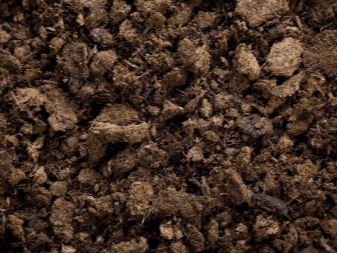
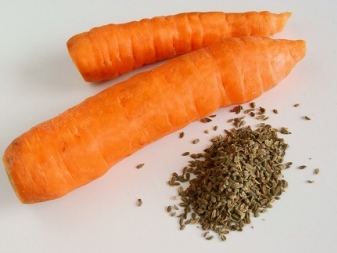
Resistant varieties
Strictly speaking, there are no varieties that are not at all suitable for eating by insects, so we will focus on some alternatives. Since insects like the chlorogenic acid in carrot tops, they fly to this smell. In the varieties below, the chlorogenic acid level is low.
- "Cardinal" - late variety with a high concentration of carotene, can be stored for a long time. Recommended for juices, baby food, canning, freezing.
- In addition, varieties resistant to attacks by carrot flies are: Perfection, Calgary F1, Vitamin 5.















The comment was sent successfully.